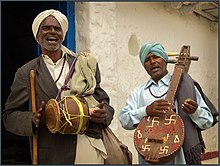
The hammered dulcimer is a percussion-stringed instrument which consists of strings typically stretched over a trapezoidal resonant sound board. The hammered dulcimer is set before the musician, who in more traditional styles may sit cross-legged on the floor, or in a more modern style may stand or sit at a wooden support with legs. The player holds a small spoon-shaped mallet hammer in each hand to strike the strings. The Graeco-Roman word dulcimer derives from the Latin dulcis (sweet) and the Greek melos (song). The dulcimer, in which the strings are beaten with small hammers, originated from the psaltery, in which the strings are plucked.
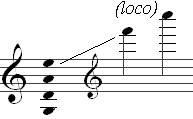
A mandolin is a stringed musical instrument in the lute family and is generally plucked with a pick. It most commonly has four courses of doubled strings tuned in unison, thus giving a total of eight strings. A variety of string types are used, with steel strings being the most common and usually the least expensive. The courses are typically tuned in an interval of perfect fifths, with the same tuning as a violin. Also, like the violin, it is the soprano member of a family that includes the mandola, octave mandolin, mandocello and mandobass.

In musical instrument classification, string instruments, or chordophones, are musical instruments that produce sound from vibrating strings when a performer strums, plucks, strikes or sounds the strings in varying manners.

Old-time music is a genre of North American folk music. It developed along with various North American folk dances, such as square dancing, contra dance, clogging, and buck dancing. It is played on acoustic instruments, generally centering on a combination of fiddle and plucked string instruments, most often the banjo, guitar, and mandolin. Together, they form an ensemble called the string band, which along with the simple banjo–fiddle duet have historically been the most common configurations to play old-time music. The genre is considered a precursor to modern country music.

La Bottine Souriante (LBS) is a folk band from Canada. The band specializes in traditional Québécois music, often with a modern twist.

Battlefield Band is a Scottish traditional music group. Founded in Glasgow in 1969, they have released over 30 albums and undergone many changes of lineup. As of 2010, none of the original founders remain in the band.
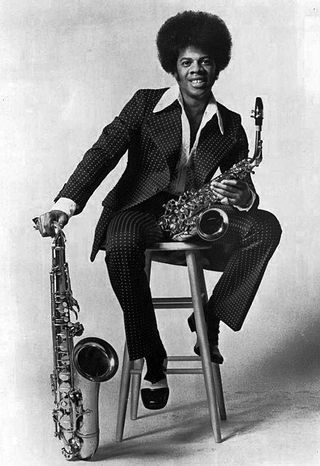
A multi-instrumentalist is a musician who plays two or more musical instruments, often but not exclusively at a professional level of proficiency.

Music of Jammu and Kashmir reflects a rich musical heritage and cultural legacy of the Indian-administered union territory of Jammu and Kashmir. Two different regions of Jammu and Kashmir consists the Jammu region and Kashmir Valley. Music of Kashmir Valley has influences of Central Asian music while music from Jammu region is similar to that of other regions of North India.

A pub session is performing music in the setting of a local pub, in which the music-making is intermingled with the consumption of ale, stout, and beer and conversation. Performers sing and play traditional songs and tunes from the Irish, English, Scottish and Manx traditions, using instruments such as the fiddle, accordion, concertina, flute, tin whistle, uilleann pipes, tenor banjo, guitar, and bodhrán. Some sessions have dancing too.

The Irish bouzouki is an adaptation of the Greek bouzouki. The newer Greek tetrachordo bouzouki was introduced into Irish traditional music in the mid-1960s by Johnny Moynihan of the folk group Sweeney's Men, who retuned it from its traditional Greek tuning C³F³A³D⁴ to G²D³A³D⁴, a tuning he had pioneered previously on the mandolin. Alec Finn, first in the Cana Band and subsequently in De Dannan, introduced the first Greek trichordo (3 course) bouzouki into Irish music.

Heartsongs: Live from Home is a live album by Dolly Parton, released on September 27, 1994. Recorded at a concert at Parton's theme park Dollywood, the album featured a mix of Parton originals and traditional folk songs. "To Daddy" was one of Parton's compositions that she had never previously released; Emmylou Harris, who recorded the song in 1978, took her recording of the song to the U.S. country singles top three). The campy "PMS Blues" went on to become a concert favorite, and received a fair amount of airplay as an album track. Mairéad Ní Mhaonaigh sang Irish vocals on "Barbara Allen".
Kailasa is an Indian fusion band, founded by Kailash Kher. The name of the band is taken from an accented pronunciation of Kailash's own name as well as Mount Kailash, the abode of Hindu God Shiva. Along with guitars, drums and keyboards, the band incorporates classical Indian instruments and sometimes traditional lyrics into their songs to infuse folk and a Sufi hue.

Irish traditional music is a genre of folk music that developed in Ireland.
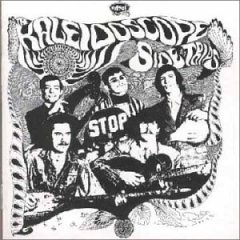
Side Trips is the debut studio album by American band Kaleidoscope. It was released in May 1967, on Epic Records BN 26304, and re-released on vinyl by Sundazed Records (2007). The album has a raw, non-limited instrumental mentality, for each member played many instruments; for example, David Lindley played guitar, banjo, fiddle, and mandolin, and Solomon Feldthouse played saz, bouzouki, dobro, vina, oud, doumbek, dulcimer, fiddle, guitar, and vocals.
Martin Swan is a Scottish multi-instrumentalist, songwriter, composer, record producer, recording engineer and instrument designer.
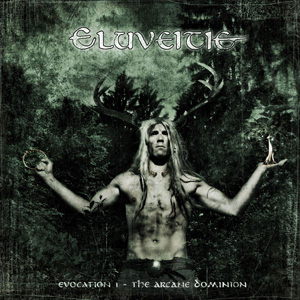
Evocation I: The Arcane Dominion is the third studio album by Swiss folk metal band Eluveitie. It was released on 17 April 2009 through Nuclear Blast. Contrary to their previous works, this album is almost entirely acoustic. The vocals are primarily handled by hurdy-gurdy player Anna Murphy. The album cover represents Cernunnos, a Celtic deity of nature. The lyrics are partly based on Gaulish inscriptions, e.g. "A Girl's Oath" uses the text of the Larzac tablet, and "Dessumiis Luge" that of the Chamalières tablet.

Acoustic Traveller is the 1996 album from John McEuen. John is notable for being a longtime member of the Nitty Gritty Dirt Band for which he was a multi-instrument and composer/arranger. He played on many of their charting albums and singles. He also records as a solo artist, and has appeared as a guest musician on many albums by many artists.
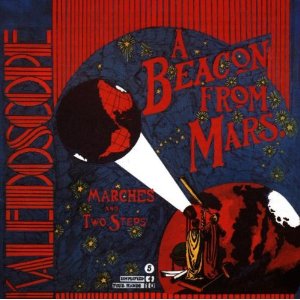
A Beacon from Mars is Kaleidoscope's second album. It was published in November 1967 by Epic Records along with the single "I Found Out" b/w "Rampè Rampè". At the time it was released it received good reviews, but like Kaleidoscope's other albums, it was commercially unsuccessful.
